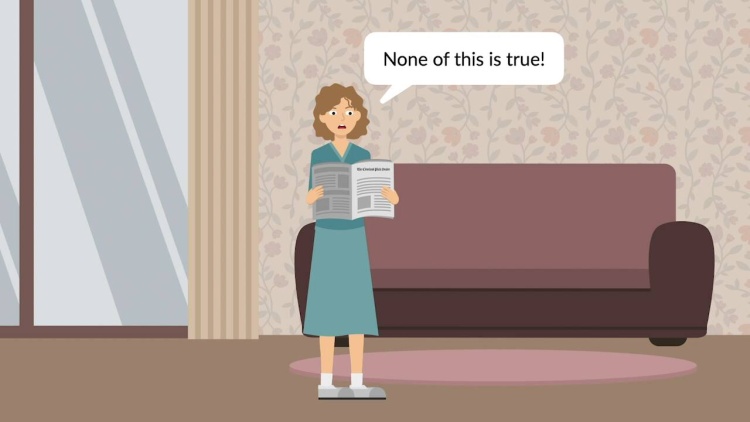Cantrell v. Forest City Publishing Co.
United States Supreme Court
419 U.S. 245, 95 S. Ct. 465, 42 L. Ed. 2d 419 (1974)

- Written by Sean Carroll, JD
Facts
After a bridge collapse, Forest City Publishing Co. (Forest City) (defendant) published an article by Joseph Eszterhas (defendant) focusing on the funeral of Melvin Cantrell. Five months later, Eszterhas and photographer Richard Conway (defendant) went to the Cantrell family home and interviewed the Cantrell children. Their mother, Margaret Cantrell (plaintiff), was not home. However, Eszterhas’s published article stated that Margaret would not talk about what happened or how the family was doing. The article also said that Margaret wore “the same mask of non-expression she wore at the funeral.” Additionally, the article misrepresented the Cantrells’ living conditions, overemphasizing their poverty. Margaret and her oldest son, William Cantrell (plaintiff), sued Eszterhas, Conway, and Forest City, alleging invasion of privacy on a false-light theory. The district judge struck the Cantrells’ punitive-damages claim, reasoning that the Cantrells had not presented evidence that any invasion of privacy was malicious. However, the district judge allowed the compensatory-damages claim, instructing the jury that liability was appropriate only if the false statements were made with knowledge of their falsity or reckless disregard for their truthfulness. The jury returned a verdict in the Cantrells’ favor. The court of appeals reversed, seemingly assuming that the district judge’s finding of no malice to support punitive damages necessarily meant that there was no actual malice to support a false-light claim. The Cantrells appealed.
Rule of Law
Issue
Holding and Reasoning (Stewart, J.)
What to do next…
Here's why 899,000 law students have relied on our case briefs:
- Written by law professors and practitioners, not other law students. 47,000 briefs, keyed to 994 casebooks. Top-notch customer support.
- The right amount of information, includes the facts, issues, rule of law, holding and reasoning, and any concurrences and dissents.
- Access in your classes, works on your mobile and tablet. Massive library of related video lessons and high quality multiple-choice questions.
- Easy to use, uniform format for every case brief. Written in plain English, not in legalese. Our briefs summarize and simplify; they don’t just repeat the court’s language.







